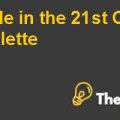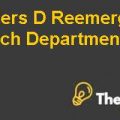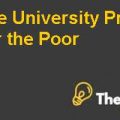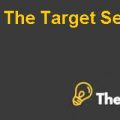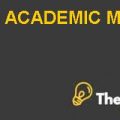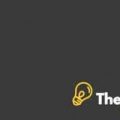Proctor and Gamble Brazil Case Study Solution
Introduction
The Proctor and Gamble Company was established in Cincinnatian, Ohio. It started from the ovulation of artisan soap and candle manufacturer but now has become one of the largest consumer packaged goods companies. The main reason of the company’s success is stated that it listens to consumers, invests in advanced and innovative technologies and manage its brands effectively. Company was earning two third of its revenue from US, while operating in over 23 countries such as North America.
The new CEO was hired in 1997 which reorganized business operations in two axes such as Global Business Units and Market Development Organization. GBU is used to develop strategies in order to manage business and global brands. On the other hand, MDO is used to develop country specific strategies such as responsibilities of local marketing, sales, human resource and external relationships.
P&G Company entered into Brazil through purchasing of Richardson Vicks Company and licensed contract for import and markets is health products such as Vicks, Hipoglos and Metamucil. By purchasing more companies, and launching its products in Brazil, company increased its presence in the consumer goods industry.Despite of making these acquisitions, Brazil remained highest loss earning country of the company.
In 1993, company further acquired three companies which produces feminine hygiene products and holds a good market share in the industry. In addition, the facilities of manufacturing of the company enhanced the strength of P&G’s competitive position.As it increased the human and capital resources of the company and resulted in tripling its manufacturing capacity, which enable the company to export 30% of its produced goods.
In 1995, company had made highest investment in Brazil, which resulted in its turnover of $400 million. However, still the company was unable to generate profitability from its goods produced. Therefore, company planned to focus only on 3 product categories such as Feminine Care, Baby Care and Fabric Care. However, all of these product lines were suffering badly.
Always product is the feminine hygiene pad brand, which generates the smallest revenue of the company among all three product lines. Moreover, it was listed third on the industry. Company moved up its product by using innovative strategies. However, with every upgrade in product, there was an increase in price which resulted in loss of company’s sales. As this product was used only by upper middle income tier. Consequently, company was left with only 10% of market share in the industry.
In order to capture local market, company payed many strategies which become unsuccessful. There were two limitations: 1. Company cannot decrease product quality. 2. By not decreasing product quality, the product price was unable to decrease. As most of females belonged to middle or lower tier, company was unable to capture most of the market. As a result, company used differentiated strategy that is innovating new packaging that will attract customers through its color which is in fashion and it will also decrease packaging price, as a result, company was able to decrease its price. Launching pamper was facing same issues, therefore, same strategy was used by the company which decreased the product price and people were able to buy this product.
Market Analysis
SWOT analysis
Strengths:
Following strengths are possessed by the Proctor & Gamble Company:
- Company owns highly loyal employees. Therefore, company is able to generate higher revenue with less use of capital resources.
- The business plan of the company which possess three important points such as invest in innovative technology, listening to consumers and effective brand management helped the company to achieve competitive advantages in many countries.
- Company innovate its strategies that help it to settle in every economy and increase company’s competitive advantages.
- Acquisitions and mergers in different countries increased company’s presence in all over the world and also increases its capital and human resources.
- Company is tend to produce high quality items and accept no alterations in it which helps the country to increase its brand image and customer satisfaction.
Weakness:
- The company is not able to achieve economies of scale in Brazil despite of applying all global strategies.
- The company is implementing short term or limited solution for one or two products. However, in long term or for more products, this strategy would not be implemented.
- The company is holding lesser market share in the industry.
Opportunities:
- The financials of the company is highly strong, therefore, company would be able to purchase more companies that will further increase in company’s resources.
- The strength of company’s resources could help the company to increase its presence in further under developed or developing countries such as Asia.
- By increasing its presence in emerging markets, it would help the company to further increase its revenue growth and profitability
- As the company is not altering their product quality, it would force customers to purchase the products at higher price.
- By using innovative strategies and capturing all over the market, company would achieve the competitive advantage of being market leader in consumer goods industry.
Threats
- With the increase in market competition, company would be facing threat of decrease in its presence.
- Unilever, the main competitor of the company, has captured more market and owns more presence in Brazilian market.
- The failure of strategies played by company’s managers in different locations, would decrease the company’s human and capital resources.................
This is just a sample partial case solution. Please place the order on the website to order your own originally done case solution.

